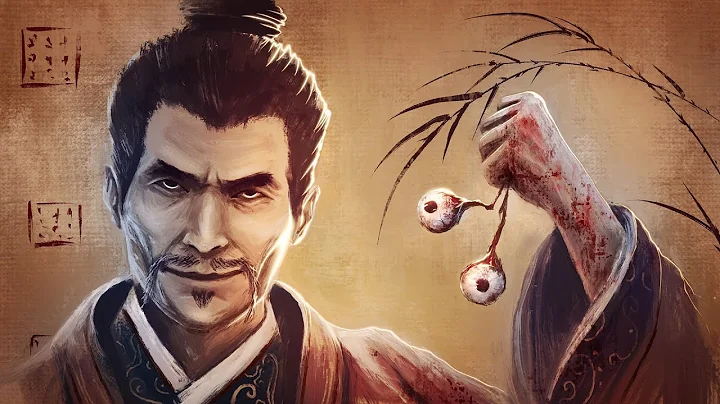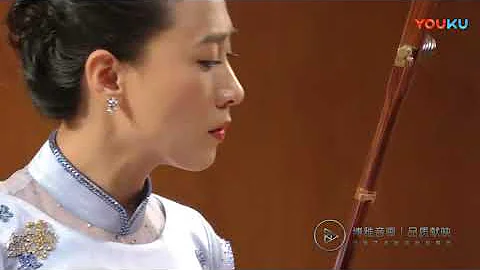preface
The Yongle prosperous age was the prosperous age that occurred during the reign of Chengzu of Ming Dynasty Zhu Di. In 1402 AD, Zhu Di was able to defeat Emperor Jianwen after four years of Jingnan campaign and ascended the throne in Nanjing. He was the founder of Ming Dynasty. , year number Yongle . After
succeeded to the throne, he worked hard to govern. Politically, he established a cabinet civil service system. Economically, he encouraged farming, built water conservancy projects, and dredged canals. Culturally, he respected Confucianism, improved the imperial examination, and built the "Yongle Dadian". In terms of foreign relations, he personally conquered Mobei five times, captured Annan in the south, established a military health station in the border areas, established a Nuergandu division in the northeast, sent Zheng He to the Western Seas, and created a new country with thousands of countries coming to Korea. During the reign of
, the world was in great power, the country was prosperous, and the territory was vast. Later generations called this period the Yongle era, and even praised it as "far beyond the Han and Tang Dynasties".

However, the editor believes that although the Yongle era showed the strength of the country, every feat of Zhu Di relied on the support of people's wealth. Especially in the late Yongle period, peasant uprisings continued and social conflicts were acute. Therefore, the Yongle era was a difficult and prosperous era, but it was glorious and great. But not comfortable and happy.
The last afterglow of the prosperous age of the feudal era
Looking at China's more than two thousand years of feudal history, the Qin and Han Dynasties were the early stages of the feudal monarchy. By the Sui and Tang it had reached its peak, and the Ming and Qing Dynasties had entered its decline.
There were five prosperous ages in the early, middle and late periods, namely, Western Han Han Wu prosperous age, Eastern Han Ming Zhang prosperous age, Sui Dynasty Kaihuang prosperous age, Tang Dynasty Kaiyuan prosperous age and Ming Dynasty Yongle prosperous age. .

In 1402 AD, Zhu Di's Jingnan troops marched south from Peiping and invaded Nanjing with great force, and succeeded to the throne with the support of civil and military officials. In 1424, Zhu Di died of illness in Yumuchuan, Inner Mongolia on his way back from the fifth expedition to Mobei.
During his twenty-two years of rule, it became the last prosperous age of feudal society. Many political achievements and events affected the Ming and Qing dynasties, and even the modern West.
Although later generations of during the Kangxi and Qianlong dynasties were more famous than Yongle, their historical influence could not keep up with Yongle.
Politically, Zhu Di had just succeeded to the throne in 1402 and made two major decisions. One was to move the capital to Beijing; the other was to establish a cabinet system .
Regarding the formation of the cabinet system, we must start with Zhu Yuanzhang. At the beginning, Zhu Yuanzhang abolished the prime minister system and directly led the six ministries himself. As a result, he had to handle every detail personally. Therefore, Zhu Yuanzhang was very tired and worked more than ten hours a day. , still can’t finish it.
But Zhu Yuanzhang was a model worker, who fought hard until he died, but Zhu Di was different. As an emperor on horseback, every time there was a war, he had to drive and fight personally, so he could not really take charge of political affairs, so he had an "assistant" to help him. The institution-cabinet system came into being.
After Zhu Di established the cabinet, he firmly held the decision-making power of the original prime minister in his own hands. He distributed the legislative power to the cabinet and the executive power to the six ministries, which greatly improved the administrative efficiency of the government.

The cabinet became the bridge between the emperor and officials. Although they were of lower rank, no higher than the fifth rank, because these bachelors were able to have personal contact with Zhu Di and participate in policy formulation, they gradually decided on national affairs, and this was established from then on. The cabinet dominated the civil government of the Ming Dynasty. As time went by,
and the eunuch's Secretary of Ceremony were in charge of voting and approving, and they restrained each other, forming a relatively stable political structure.
This is also the mechanism why the emperors in the middle and late Ming Dynasty were able to maintain the operation of the empire even though they were absurd and playful.
Moving the capital to Beijing was Zhu Di's first edict, but it was the longest and last event in the entire Yongle period.
Peking was changed to Beijing in the edict. Starting from 1407, craftsmen from all over the country were gathered and two to three hundred thousand migrant workers were recruited. After 14 years, a large-scale palace complex was built, which became one of the famous buildings in Chinese history. one.
By 1420 the Forbidden City was completed. In 1421, Zhu Di officially moved the capital from Nanjing to Beijing. From then on, Beijing became the political center of the Ming and Qing Dynasties and New China.
Economically, Zhu Di attached great importance to the production and living conditions of farmers, and required local officials to have a deep understanding of people's sentiments and report people's sufferings to the court at any time. also stipulated that "those who do not speak will be punished, and those who speak inappropriately shall not be asked."
At the same time, Zhu Di also repaired the Grand Canal that had been blocked for many years in the Yuan Dynasty, turning it into a southern grain transportation route supplying Beijing. The population and taxed grain in the Ming Dynasty increased from 56 million and 30.46 million shi during the Zhu Yuanzhang period to Yongle. 67 million and 31.3 million stone in the early years.

In addition, the handicraft porcelain industry reached its peak during the Zhu Di period, business remained prosperous, and the shipbuilding industry ranked among the best in the world.
Militaryly, the Zhu Di dynasty was the largest and most active period of foreign war in the entire Ming Dynasty, which was mainly reflected in the recovery of Annan and the personal expedition to Mongolia.
Regarding Annan, Zhu Yuanzhang once included the place, Champa State and Cambodia into the country without conquest . However, Zhu Di believed that the expansion of Annan's power threatened the security of the southern border of the Ming Dynasty, so he wanted to incorporate Annan into the Ming Dynasty. territory.
In 1406, troops were sent to recapture Annan, and the following year he established the Chief Secretary of Jiaozhi in Hanoi to directly rule it. However, Zhu Di's military actions encountered fierce resistance from the Annan army and people.
Although they were unable to engage in head-on combat with the Ming army, they used the jungles and mountains to launch guerrilla warfare. The Ming army had to spend a lot of manpower and financial resources to deal with the Vietnamese guerrilla forces.
However, it has been unable to suppress the rebellion for more than ten years, and it has only been a waste of the court's financial resources. Finally, in 1427, after Zhu Di's death, the Ming Dynasty gave up its 22-year effort to establish the Chief Secretary of Cochin. From then on, China lost its final opportunity to annex Annan.

At the same time, in order to completely eliminate the remaining forces of the Yuan Dynasty , Zhu Di personally led the Ming army in the Northern Expedition from 1410, and personally conquered Mongolia five times in 1410, 1414, 1422, 1423 and 1424.
He went deep into the hinterland of Mobei and even led the charge, defeating the Mongolian army many times. In addition to establishing a strategic advantage in Mongolia, Zhu Di also established the Nuergandusi in the lower reaches of the Heilongjiang River in 1409, which governed today's Heilongjiang, the Ussuri River, the Songhua River basin, and the Sakhalin Island.
The three battalions of the Ming Army and the Duoyan Three Guards he formed became the most powerful firearms and cavalry units in the entire Ming Dynasty and even in Asia.
The Ming Dynasty during Zhu Di's period also became the most powerful and aggressive military era from the middle Tang Dynasty to the early Qing Dynasty. The Ming Dynasty's territory reached 10 million square kilometers.

The initiative of national strategy during the Yongle period was also reflected in foreign relations. Zhu Di changed the restrained foreign policy during the Zhu Yuanzhang period. The most famous one was Zheng He's voyages to the West.
In 1405, Zhu Di sent the eunuch Zheng He to lead more than 27,800 officers and soldiers on sixty-two " treasure ships " to sail to the Western Ocean. The fleet set out from Liujiagang, Suzhou, to Champa , Malaysia , Indonesia , Sumatra and Ceylon and other places.

After that, he made seven voyages to the sea in more than 20 years from 1407 to 1433, passing through more than 30 countries, reaching as far as the east coast of Africa, the Red Sea and the holy land of Islam Mecca .
Through Zheng He's voyages to the West, Zhu Di pushed the tribute system to its peak, including North Korea, Japan, Ryukyu, Annan, Chenla , Siam , Champa, Sumatra, Java and other Pacific and Indian oceans. There are 65 countries in the region, and the prestige of the Ming Dynasty spreads as far as Asia and Africa.

In short, the Yongle period, as one of the most glorious periods in China's feudal era, developed China's thousands-year-old material civilization and spiritual civilization to a new height and became a focus of world civilization at that time.
Why is it said that the Yongle era was a difficult one?
Although Zhu Di single-handedly pushed the Ming Dynasty's national power and reputation to a climax, during his 22 years in office, he moved the capital to Beijing, built the imperial palace, made seven voyages to the West, and five expeditions to Mobei. Which feat was it? Behind it all requires a lot of public and financial support.
Frequent corvee and taxation brought a heavy burden to the common people. Among them, 300,000 migrant workers were recruited when the capital was moved to Beijing, more than 300,000 troops were recruited for the personal expedition to Mobei, and the fifteen-year southern expedition to Annan consumed countless human and financial resources.

The Grand Canal project used 300,000 people to serve as corvees. Zheng He's voyages to the West followed the principle of giving generously and taking little, and generous rewards were given to each country he visited. The huge expenses brought heavy pressure to various places.
Originally, after the peasant uprising at the end of the Yuan Dynasty and the Jingnan War, the people in most areas of the north were in dire straits, merchants were blocked, and the country was devastated. Zhu Di once said:
"Today, the people in the north, if they are good at taking care of themselves when they are seriously ill, will be able to survive." "Safe. Otherwise, the disease will get worse. That's why I work hard at night."
It's just that the "supply-prone" areas of Peiping, Yongping, Baoding in Jingnan have received policy care, and the vast areas of Shandong and Henan have not only not yet Sharing the dividends, several major disasters broke out in succession.
In 1406, a locust drought occurred in Jinan, Shandong Province, and epidemics spread among hungry people. Qingzhou Prefecture reported as many as 713,840 acres of exterminated farmland at one time.
At the same time, these two places are the places with the heaviest corvee. Under the double blow of natural and man-made disasters, many areas in the Central Plains are already full of refugees. According to records in the 17th year of Yongle:
"There were famines, floods and droughts in Shandong, Henan, Shanxi and Shaanxi. Still, peeling bark from trees, digging for grass roots...old and young moved around, bumping roads, selling wives and children, just to survive."
So much so that there were no fewer than ten uprisings, large and small, in the Yongle period, the most famous of which was Tang Sai'er in Shandong revolted , Tang Sai'er was just a prostitute, but she raised her arms and gathered thousands of people.
held an uprising in 1420, and farmers from all over the country responded one after another. In a short period of time, the rebel army grew to 20,000 people, covering nearly ten states and counties including Qingzhou and Jimo in Shandong.
Although the uprising failed in less than a month after Zhu Di mobilized an army to encircle and suppress it, it occurred during the prosperous period of the Ming Dynasty and had a great political impact.
For Zhu Di, the Yongle prosperous era he created turned out to be a peasant uprising that only appeared in the last years of the dynasty. It must be said that it was very embarrassing. In order to maintain his rule, he had to make some concessions and exempt farmers from all over Shandong from taxes and corvee. .
Summary
The difference between the Yongle prosperous age and the previous prosperous ages is that it not only revitalizes the internal vitality of the empire, but also consolidates the international system with itself as the axis.
To some extent, Zhu Di had a greater influence on the historical course of the Ming Dynasty than Zhu Yuanzhang, and such a prosperous era could only be maintained under the leadership of a leader driven by the ideal of establishing an empire.
Although Zhu Di was talented and strategist, there were still uprisings such as Tang Saier's. It must be said that this was a great irony to the Ming Dynasty. But even so, the emperors after Zhu Di did not have his understanding and wisdom of the empire, and the Ming Dynasty gradually Heading downhill.









![Chu-Han Rebels vs Imperial Qin [ENG SUB] 刘邦项羽苦战秦军 - DayDayNews](https://i.ytimg.com/vi/n8W7D3CAp3o/hq720.jpg?sqp=-oaymwEcCNAFEJQDSFXyq4qpAw4IARUAAIhCGAFwAcABBg==&rs=AOn4CLCEhYn2GhSDu1BEYRdwg6cYFSQsVQ)











